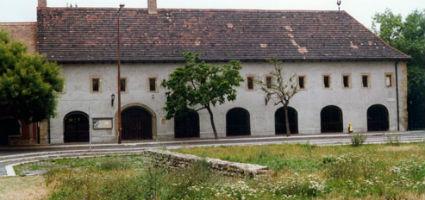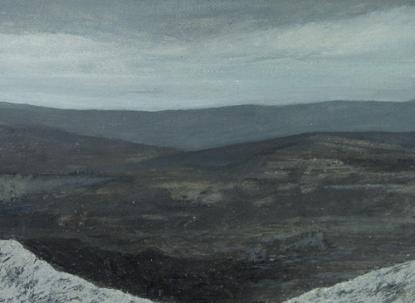2025. April 18. Friday
Budapest Gallery Exhibition Hall - Budapest
 |
Address: 1036, Budapest Lajos u. 158.
Phone number: (1) 388-6784
E-mail: info@budapestgaleria.hu
Opening hours: Tue-Sun 10-18
|
The exhibition has closed for visitors.
2006.07.27. - 2006.09.03.
The pictures shown are lands, inner spaces and in some cases, they even have human figures in them. There are no motifs emphasized in the landscapes, almost all of them are simple, at first sight they seem like a homogenic flat meadow, a slightly hilly land or a clearing among the trees.

The simple spectacle is intensified with the enrichment of the inner structure, the repetition of elements and the variegation of recurring elements. These are pictures that are to understand by contemplation and not by a sudden glimpse. I bore them for long in myself and created them for long too. They cannot be connected to the view but are built up of its elements. While the larger lands are independent units, the landscapes often have their twins reflecting on the same topic. Sometimes they strengthen each other, other times it is juxtaposition. The pale colors and the extreme, sometimes unreal lighting characterize almost all of the pictures.
The pictures of inner spaces having human figures in them break into the line of landscapes. The geometric elements that build up the space slice up the surface. The elements that sometimes can hardly be defined as objects as well as the misconstruction of the fictive inner space makes the human figure unapproachable and isolated who often sit bent and stiffed like icon.
The cube inside the walls does not only appear as defense from the outer space but also as a chamber reflecting on our problems. These are not traditional portraits but are not simply interiors in which the figure is just one of the elements either.
Déry Konstantin

The simple spectacle is intensified with the enrichment of the inner structure, the repetition of elements and the variegation of recurring elements. These are pictures that are to understand by contemplation and not by a sudden glimpse. I bore them for long in myself and created them for long too. They cannot be connected to the view but are built up of its elements. While the larger lands are independent units, the landscapes often have their twins reflecting on the same topic. Sometimes they strengthen each other, other times it is juxtaposition. The pale colors and the extreme, sometimes unreal lighting characterize almost all of the pictures.
The pictures of inner spaces having human figures in them break into the line of landscapes. The geometric elements that build up the space slice up the surface. The elements that sometimes can hardly be defined as objects as well as the misconstruction of the fictive inner space makes the human figure unapproachable and isolated who often sit bent and stiffed like icon.
The cube inside the walls does not only appear as defense from the outer space but also as a chamber reflecting on our problems. These are not traditional portraits but are not simply interiors in which the figure is just one of the elements either.
Déry Konstantin
